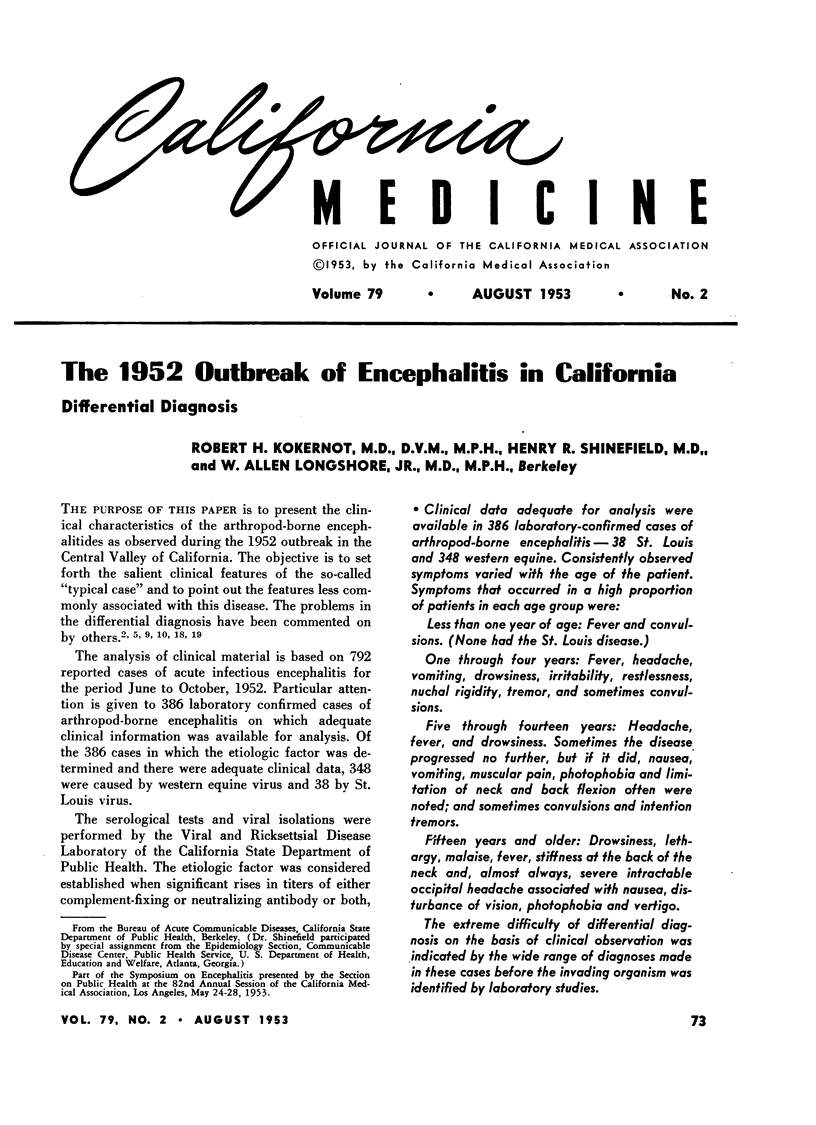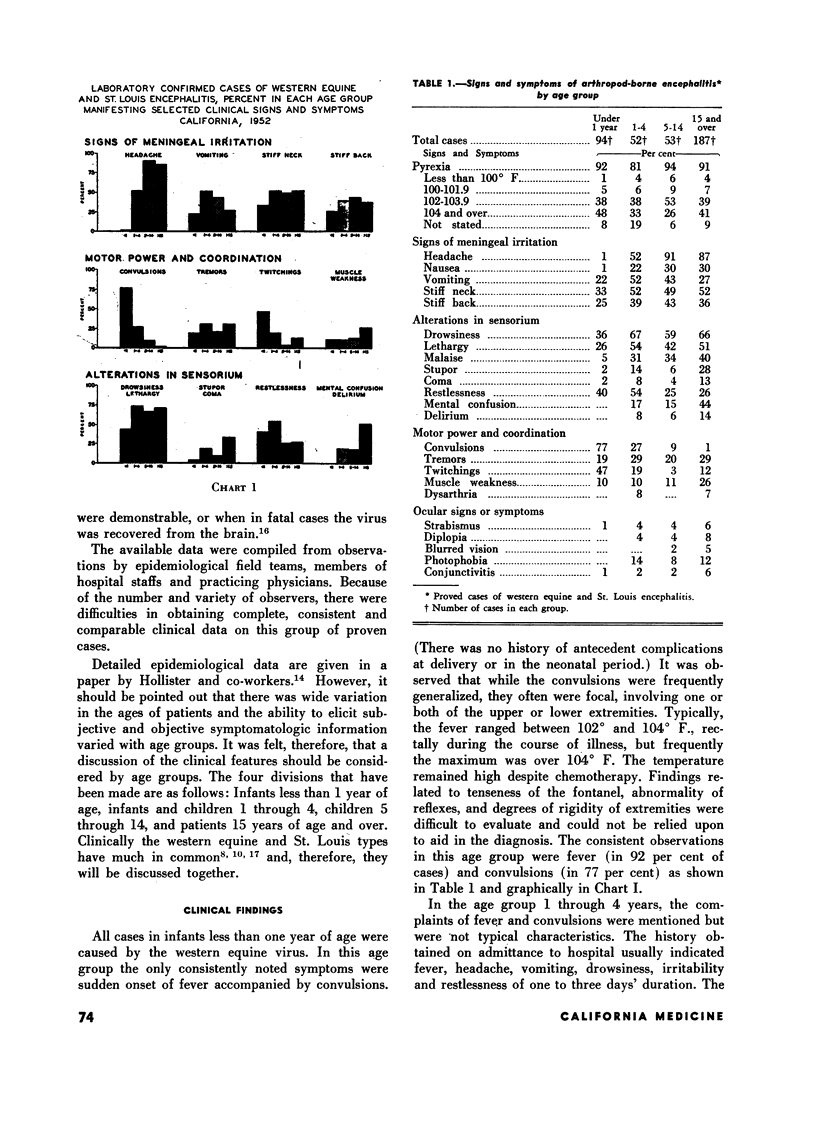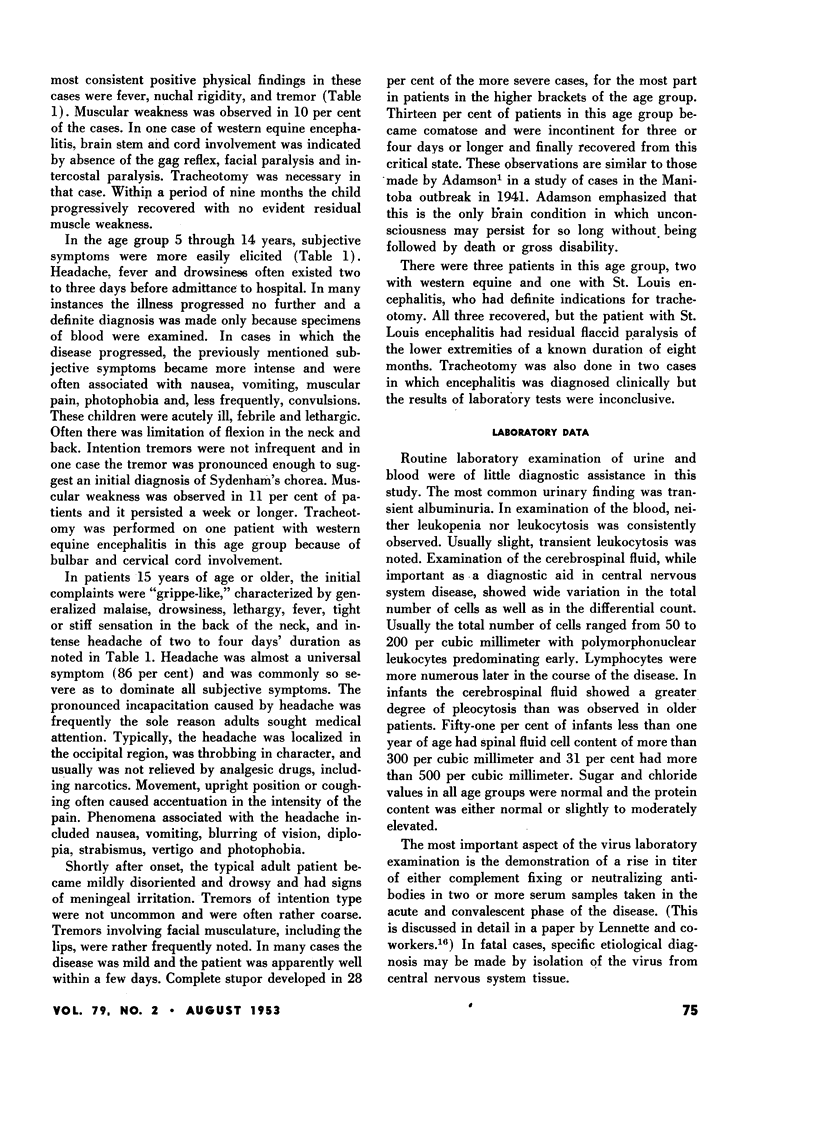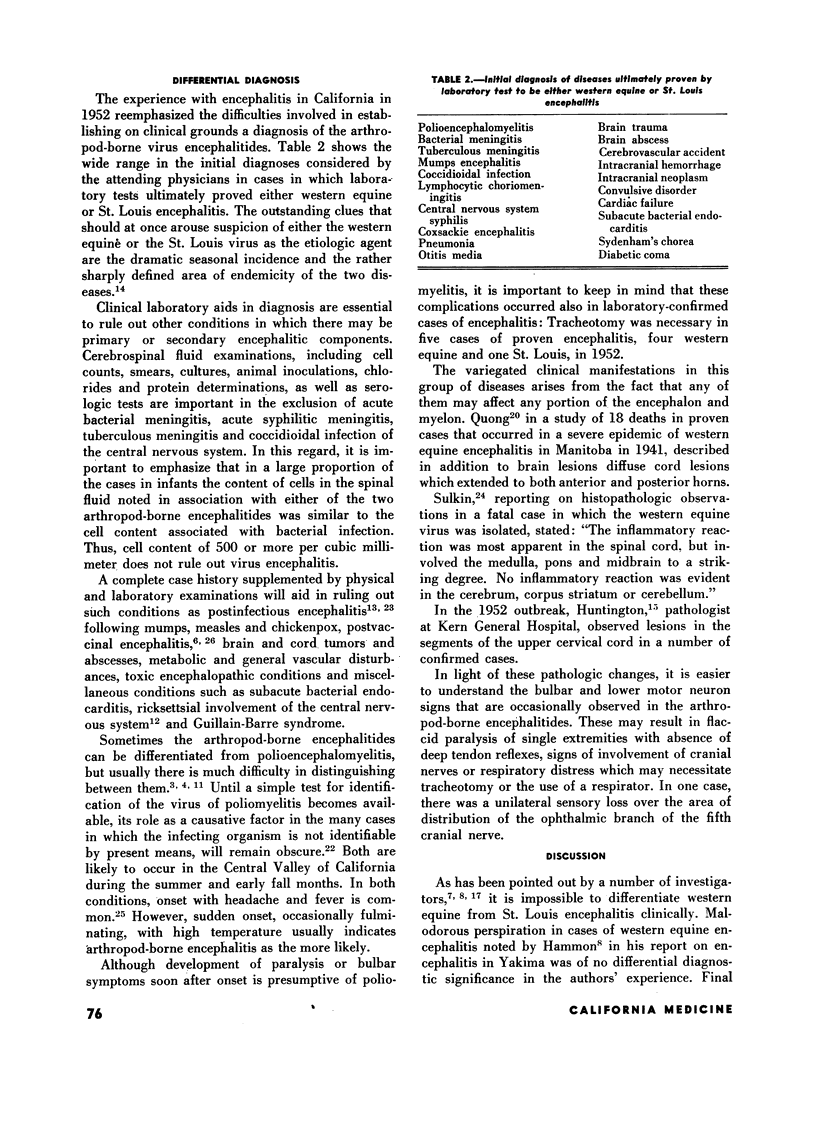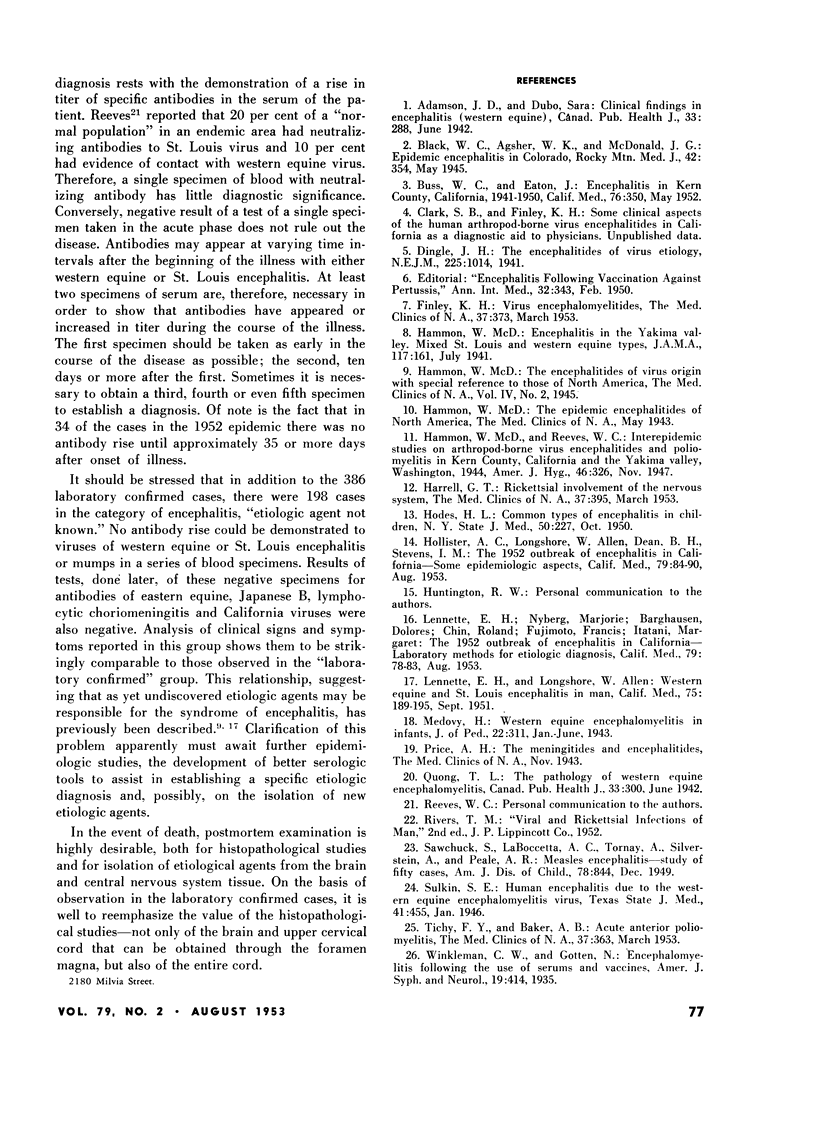Abstract
Clinical data adequate for analysis were available in 386 laboratory-confirmed cases of arthropod-borne encephalitis — 38 St. Louis and 348 western equine. Consistently observed symptoms varied with the age of the patient. Symptoms that occurred in a high proportion of patients in each age group were:
Less than one year of age: Fever and convulsions. (None had the St. Louis disease.)
One through four years: Fever, headache, vomiting, drowsiness, irritability, restlessness, nuchal rigidity, tremor, and sometimes convulsions.
Five through fourteen years: Headache, fever, and drowsiness. Sometimes the disease progressed no further, but if it did, nausea, vomiting, muscular pain, photophobia and limitation of neck and back flexion often were noted; and sometimes convulsions and intention tremors.
Fifteen years and older: Drowsiness, lethargy, malaise, fever, stiffness at the back of the neck and, almost always, severe intractable occipital headache associated with nausea, disturbance of vision, photophobia and vertigo.
The extreme difficulty of differential diagnosis on the basis of clinical observation was indicated by the wide range of diagnoses made in these cases before the invading organism was identified by laboratory studies.
Full text
PDF